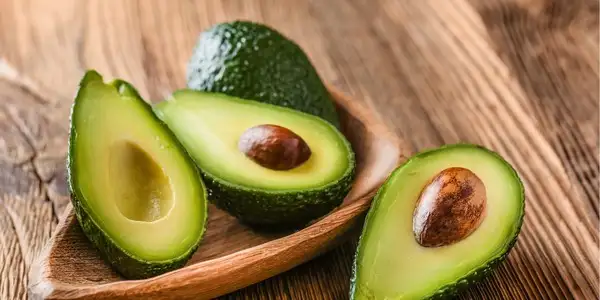
The avocado is the fruit that transcends food categories and is known as a category of its own.The green jewels of food are notorious for their healthy fats and...
Read more


|
Nutrient |
Per 100 g | Per portion (25 g) |
|---|---|---|
|
Calorific value |
280 kJ | 70 kJ |
|
Energy |
67 kcal | 16.75 kcal |
|
Carbohydrates |
12 g | 3 g |
|
Protein |
1 g | 0.25 g |
|
Fat |
0 g | 0 g |
The food Fig (fresh) is composed of the following macronutrients.
Fig, also called Ficus carica, is a healthy and nutritious food with many benefits:
Figs are a popular tree fruit. They have been cultivated for thousands of years and are considered one of the oldest known fruits. Figs are native to many parts of the world, including Europe, Asia and Africa, and are now grown in many other parts of the world.
Figs are round to oval in shape and have a velvety, leathery skin that comes in many different colors, including green, yellow, brown and black. Inside the fruit is a sweet, fibrous mass with small seeds. Figs ripen in their natural environment from August to October and are usually eaten fresh, but are also made into dried figs, jams, marmalades and other foods.
What is the best way to store figs?
Unripe figs should be stored at room temperature until they are ripe. Ripe figs can be stored in the refrigerator to extend their shelf life.
What are the varieties of figs?
There are many varieties of figs that vary in size, color, shape and flavor. Some of the most popular varieties are: Black Mission, Kadota, Calimyrna, Brown Turkey and Sierra.
Where do figs come from and where are they grown?
Figs are originally from the arid regions of Western and Central Asia. However, they are widely grown in many parts of the world, including Europe, North Africa, the Middle East, Australia and California. Figs thrive in warm climates and require plenty of sun, moisture and fertile soil to grow and flourish. In most regions, figs are a popular fruit and are often used in various foods and dishes.
I love this app! The food is super varied and filling (and soo delicious!). With one purchase I have the ingredients for a whole week together, thanks to the shopping list. The ingredients are also readily available and not really expensive.
Nicole — App User
The first app in the field of nutrition tips that really convinces me. Updates get minor issues out of the way and new features are added all the time. Top!
Unknown user — App User
ave already tried many nutrition apps but here it is really great and you save a lot of time because you do not have to enter all the meals yourself! 👍👏
Mareen — App User
I don't usually rate apps but this one has to be rated.... I have never had such a great app just fits everything.... The nutrition plans are just absolutely awesome just everything is awesome many many thanks
Mareen — App User
This app is an excellent support for healthy eating even with little time and effort! Super recipes are also included. Highly recommended!
Lennert — App User